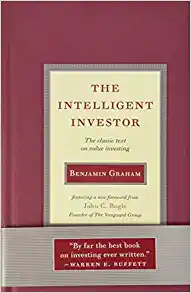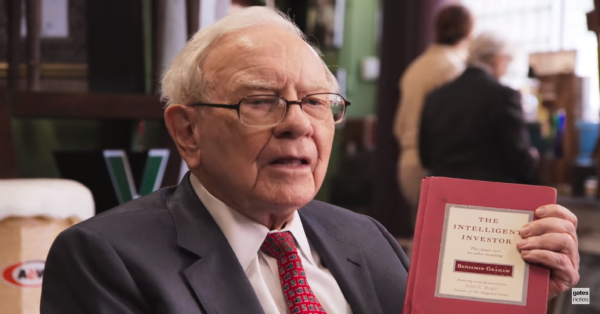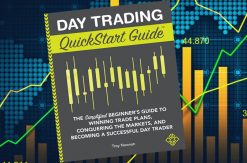The Intelligent Investor: The Classic Text on Value Investing by Benjamin Graham, Book Review & Summary
About The Book:

The Intelligent Investor: The Classic Text on Value Investing by Benjamin Graham,
It was first published in 1949, is a widely acclaimed book on value investing.
The Intelligent Investor is based on value investing, an investment approach Graham began teaching at Columbia Business School in 1928 and subsequently refined with David Dodd. This sentiment was echoed by other Graham disciples such as Irving Kahn and Walter Schloss.
The Intelligent Investor also marks a significant deviation to stock selection from Graham’s earlier works, such as Security Analysis. He explained the change as:
The thing that I have been emphasizing in my own work for the last few years has been the group approach. To try to buy groups of stocks that meet some simple criterion for being undervalued-regardless of the industry and with very little attention to the individual company… I found the results were very good for 50 years.
They certainly did twice as well as the Dow Jones. And so my enthusiasm has been transferred from the selective to the group approach.
Graham’s favorite allegory is that of Mr. Market, an obliging fellow who turns up every day at the shareholder’s door offering to buy or sell his shares at a different price. Often, the price quoted by Mr. Market seems plausible, but sometimes it is ridiculous. The investor is free to either agree with his quoted price and trade with him or ignore him completely. Mr. Market doesn’t mind this and will be back the following day to quote another price.
The point of this anecdote is that the investor should not regard the whims of Mr. Market as a determining factor in the value of the shares the investor owns. He should profit from market folly rather than participate in it. The investor is advised to concentrate on the real-life performance of his companies and receiving dividends, rather than be too concerned with Mr. Market’s often irrational behavior.

Since the work was published in 1949 Graham revised it several times, most recently in 1971–72. This was published in 1973 as the “Fourth Revised Edition” ISBN 0-06-015547-7, and it included a preface and appendices by Warren Buffett. Graham died in 1976. Commentaries and new footnotes were added to the fourth edition by Jason Zweig, and this new revision was published in 2003.[3]
- The Intelligent Investor (Re-issue of the 1949 edition) by Benjamin Graham. Collins, 2005, 269 pages. ISBN 0-06-075261-0.
- The Intelligent Investor (Revised 1973 edition) by Benjamin Graham and Jason Zweig. HarperBusiness Essentials, 2003, 640 pages. ISBN 0-06-055566-1.
An unabridged audio version of the Revised Edition of The Intelligent Investor was also released on July 7, 2015.
Book contents: (Amazon Link 2006)(2005)(2003)
2003 edition
- Introduction: What This Book Expects to Accomplish
- Commentary on the Introduction
- Investment versus Speculation: Results to Be Expected by the Intelligent Investor
- The Investor and Inflation
- A Century of Stock Market History: The Level of Stock Market Prices in Early 1972
- General Portfolio Policy: The Defensive Investor
- The Defensive Investor and Common Stocks
- Portfolio Policy for the Enterprising Investor: Negative Approach
- Portfolio Policy for the Enterprising Investor: The Positive Side
- The Investor and Market Fluctuations
- Investing in Investment Funds
- The Investor and His Advisers
- Security Analysis for the Lay Investor: General Approach
- Things to Consider About Per-Share Earnings
- A Comparison of Four Listed Companies
- Stock Selection for the Defensive Investor
- Stock Selection for the Enterprising Investor
- Convertible Issues and Warrants
- Four Extremely Instructive Case Histories and more
- A Comparison of Eight Pairs of Companies
- Shareholders and Managements: Dividend Policy
- “Margin of Safety” as the Central Concept of Investment
- Postscript
- Commentary on Postscript
- Appendixes
- The Superinvestors of Graham-and-Doddsville
- Important Rules Concerning Taxability of Investment Income and Security Transactions (in 1972)
- The Basics of Investment Taxation (Updated as of 2003)
- The New Speculation in Common Stocks
- A Case History: Aetna Maintenance Co.
- Tax Accounting for NVF’s Acquisition of Sharon Steel Shares
- Technological Companies as Investments
- Endnotes
- Index
Editorial Reviews:
“By far the best book on investing ever written.”
(Warren Buffett)
“If you read just one book on investing during your lifetime, make it this one”
(Fortune)
“The wider Mr. Graham’s gospel spreads, the more fairly the market will deal with its public.”
(Barron’s)
(Amazon Link 2006) (2005) (2003)
About The Author:
Benjamin Graham (1894-1976), the father of value investing, has been an inspiration for many of today’s most successful businesspeople. He is also the author of Securities Analysis and The Interpretation of Financial Statements.
My Reviews:
Appearance:
Content:
Did You Know: (Book Articles)
Through chances various, through all
vicissitudes, we make our way. . . .
Aeneid
Preface to the Fourth Edition, by Warren E. Buffett
read the first edition of this book early in 1950, when I was nineteen. I thought then that it was by far the best book about investing ever written. I still think it is. To invest successfully over a lifetime does not require a stratospheric IQ, unusual business insights, or inside information.
What’s needed is a sound intellectual framework for making decisions and the ability to keep emotions from corroding that framework. This book precisely and clearly prescribes the proper framework. You must supply the emotional discipline. If you follow the behavioral and business principles that Graham advocates—and if you pay special attention to the invaluable advice in Chapters 8 and 20—you will not get a poor result from your investments. (That represents more of an accomplishment than you might think.)
Whether you achieve outstanding results will depend on the effort and intellect you apply to your investments, as well as on the amplitudes of stock-market folly that prevail during your investing career. The sillier the market’s behavior, the greater the opportunity for the business-like investor. Follow Graham and you will profit from folly rather than participate in it.
To me, Ben Graham was far more than an author or a teacher. More than any other man except my father, he influenced my life. Shortly after Ben’s death in 1976, I wrote the following short remembrance about him in the Financial Analysts Journal. As you read the book, I believe you’ll perceive some of the qualities I mentioned in this tribute.
BENJAMIN GRAHAM
1894–1976
Several years ago Ben Graham, then almost eighty, expressed to a friend the thought that he hoped every day to do “something foolish, something creative and something generous.”
The inclusion of that first whimsical goal reflected his knack for packaging ideas in a form that avoided any overtones of sermonizing or self-importance. Although his ideas were powerful, their delivery was unfailingly gentle.
Readers of this magazine need no elaboration of his achievements as measured by the standard of creativity. It is rare that the founder of a discipline does not find his work eclipsed in rather short order by successors. But over forty years after publication of the book that brought structure and logic to a disorderly and confused activity, it is difficult to think of possible candidates for even the runner-up position in the field of security analysis. In an area where much looks foolish within weeks or months after publication, Ben’s principles have remained sound—their value often enhanced and better understood in the wake of financial storms that demolished flimsier intellectual structures. His counsel of soundness brought unfailing rewards to his followers—even to those with natural abilities inferior to more gifted practitioners who stumbled while following counsels of brilliance or fashion.
A remarkable aspect of Ben’s dominance of his professional field was that he achieved it without that narrowness of mental activity that concentrates all effort on a single end. It was, rather, the incidental by-product of an intellect whose breadth almost exceeded definition. Certainly I have never met anyone with a mind of similar scope. Virtually total recall, unending fascination with new knowledge, and an ability to recast it in a form applicable to seemingly unrelated problems made exposure to his thinking in any field a delight.
But his third imperative—generosity—was where he succeeded beyond all others. I knew Ben as my teacher, my employer, and my friend. In each relationship—just as with all his students, employees, and friends—there was an absolutely open-ended, no-scores-kept generosity of ideas, time, and spirit. If clarity of thinking was required, there was no better place to go. And if encouragement or counsel was needed, Ben was there.
Walter Lippmann spoke of men who plant trees that other men will sit under. Ben Graham was such a man.
Reprinted from the Financial Analysts Journal, November/December 1976.
A Note About Benjamin Graham
by Jason Zweig
Who was Benjamin Graham, and why should you listen to him? Graham was not only one of the best investors who ever lived; he was also the greatest practical investment thinker of all time. Before Graham, money managers behaved much like a medieval guild, guided largely by superstition, guesswork, and arcane rituals. Graham’s Security Analysis was the textbook that transformed this musty circle into a modern profession.
And The Intelligent Investor is the first book ever to describe, for individual investors, the emotional framework and analytical tools that are essential to financial success. It remains the single best book on investing ever written for the general public. The Intelligent Investor was the first book I read when I joined Forbes Magazine as a cub reporter in 1987, and I was struck by Graham’s certainty that, sooner or later, all bull markets must end badly. That October, U.S. stocks suffered their worst one-day crash in history, and I was hooked. (Today, after the wild bull market of the late 1990s and the brutal bear market that began in early 2000, The Intelligent Investor reads more prophetically than ever.)
Graham came by his insights the hard way: by feeling firsthand the anguish of financial loss and by studying for decades the history and psychology of the markets. He was born Benjamin Grossbaum on May 9, 1894, in London; his father was a dealer in china dishes and figurines.2 The family moved to New York when Ben was a year old. At first, they lived the good life—with a maid, a cook, and a French governess—on upper Fifth Avenue. But Ben’s father died in 1903, the porcelain business faltered, and the family slid haltingly into poverty. Ben’s mother turned their home into a boardinghouse; then, borrowing money to trade stocks “on margin,” she was wiped out in the crash of 1907. For the rest of his life, Ben would recall the humiliation of cashing a check for his mother and hearing the bank teller ask, “Is Dorothy Grossbaum good for five dollars?”
Fortunately, Graham won a scholarship at Columbia, where his brilliance burst into full flower. He graduated in 1914, second in his class. Before the end of Graham’s final semester, three departments— English, philosophy, and mathematics—asked him to join the faculty. He was all of 20 years old.
Instead of academia, Graham decided to give Wall Street a shot. He started as a clerk at a bond-trading firm, soon became an analyst, then a partner, and before long was running his own investment partnership.
The Internet boom and bust would not have surprised Graham. In April 1919, he earned a 250% return on the first day of trading for Savold Tire, a new offering in the booming automotive business; by October, the company had been exposed as a fraud and the stock was worthless.
Graham became a master at researching stocks in microscopic, almost molecular, detail. In 1925, plowing through the obscure reports filed by oil pipelines with the U.S. Interstate Commerce Commission, he learned that Northern Pipe Line Co.—then trading at $65 per share—held at least $80 per share in high-quality bonds. (He bought the stock, pestered its managers into raising the dividend, and came away with $110 per share three years later.)
Despite a harrowing loss of nearly 70% during the Great Crash of 1929–1932, Graham survived and thrived in its aftermath, harvesting bargains from the wreckage of the bull market. There is no exact record of Graham’s earliest returns, but from 1936 until he retired in 1956, his Graham-Newman Corp. gained at least 14.7% annually, versus 12.2% for the stock market as a whole—one of the best long-term track records on Wall Street history.
How did Graham do it? Combining his extraordinary intellectual powers with profound common sense and vast experience, Graham developed his core principles, which are at least as valid today as they were during his lifetime:
• A stock is not just a ticker symbol or an electronic blip; it is an ownership interest in an actual business, with an underlying value that does not depend on its share price.
• The market is a pendulum that forever swings between unsustainable optimism (which makes stocks too expensive) and unjustified pessimism (which makes them too cheap). The intelligent investor is a realist who sells to optimists and buys from pessimists.
• The future value of every investment is a function of its present price. The higher the price you pay, the lower your return will be.
• No matter how careful you are, the one risk no investor can ever eliminate is the risk of being wrong. Only by insisting on what Graham called the “margin of safety”—never overpaying, no matter how exciting an investment seems to be—can you minimize your odds of error.
• The secret to your financial success is inside yourself. If you become a critical thinker who takes no Wall Street “fact” on faith, and you invest with patient confidence, you can take steady advantage of even the worst bear markets. By developing your discipline and courage, you can refuse to let other people’s mood swings govern your financial destiny. In the end, how your investments behave is much less important than how you behave.
I always write my reviews on Amazon, 3ee, Goodreads, LibraryThing, and Social Media such as Facebook, Instagram, Twitter, Linked In, Telegram.
If you also have read this book, please share your review below, we greatly appreciate your comment, and let’s talk about it!



